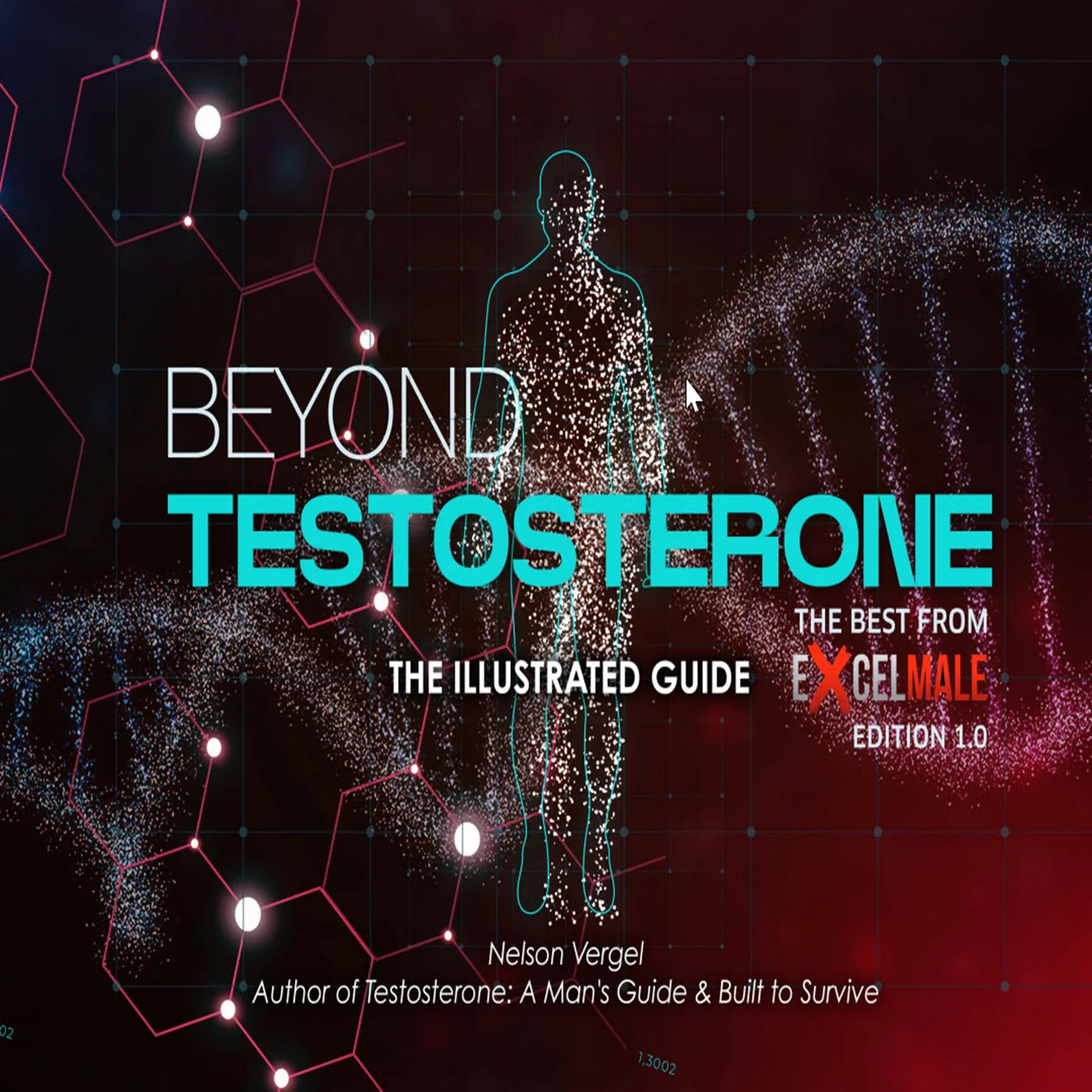Considering how many health conditions that can be linked to low testosterone as well as the various types (Primary, Secondary, etc) should I seek a second opinion if all that was done was an MRI? I keep coming across stories where patients had brain or pituitary tumors that were missed on the scans but found during surgery.
- Forums
- Thyroid, Pregnenolone, Progesterone, DHEA, etc
- Thyroid, DHEA, Pregnenolone, Progesterone, etc
You are using an out of date browser. It may not display this or other websites correctly.
You should upgrade or use an alternative browser.
You should upgrade or use an alternative browser.
Is a pituitary MRI enough for low testosterone diagnosis?
- Thread starter Greyfox
- Start date
-
- Tags
- mri pituitary tumor second opi
Nelson Vergel
Founder, ExcelMale.com
PITUITARY IMAGING BY MRI AND ITS CORRELATION WITH BIOCHEMICAL PARAMETERS IN THE EVALUATION OF MEN WITH HYPOGONADOTROPIC HYPOGONADISM
Gautam Das, MD, MRCP (Diabetes and Endocrinology), FRCP (UK), FACE1; Ashutosh Surya, MRCP (UK)1; Onyebuchi Okosieme, MD, FRCP (UK)1; Ahmed Vali, FRCR (UK)2; Brian P. Tennant, BSc, MSc, PhD3; John Geen, PhD, FRCPath (UK)3,4; Hussam Abusahmin, MSc, MRCP (Diabetes and Endocrinology)1
From the 1Department of Endocrinology, Prince Charles Hospital, Cwm Taf Morgannwg University Health Board, Merthyr Tydfil, United Kingdom
2Department of Radiology, Prince Charles Hospital, Cwm Taf Morgannwg University Health Board, Merthyr Tydfil, United Kingdom
3Department of Clinical Biochemistry, Prince Charles Hospital, Cwm Taf Morgannwg University Health Board, Merthyr Tydfil, United Kingdom
4Faculty of Life Sciences and Education, University of South Wales, Pontypridd, United Kingdom.
ABSTRACT
Objective: A significant ambiguity still remains about which patient deserves a magnetic resonance imaging (MRI) scan of the pituitary during evaluation of hypogonadotropic hypogonadism (HH) in men.
Methods: Retrospective case series of 175 men with HH referred over 6 years.
Results: A total of 49.7% of men had total testosterone (TT) levels lower than the Endocrine Society threshold of 5.2 nmol/L. One-hundred forty-two patients (81.2%) had normal appearance of pituitary MRI, whereas others had different spectrum of abnormalities (empty sella [n = 16], macroadenoma [n = 8], microadenoma [n = 8], and pituitary cyst [n = 1]). In men with TT in the lowest quartile, MRI pituitary findings were not significantly different from men in the remaining quartiles (P = .50). Patients with raised prolactin had higher number of abnormal MRI findings (38.9% vs. 13.7%; P = .0014) and adenomatous lesions (macro and micro) (27.8% vs. 4.3%; P = .01) in comparison to men with normal prolactin. The prolactin levels (median [interquartile range]) were highest in men with macroadenomas in both groups (9,950 [915]; P = .007 and 300 [68.0] mU/L; P = .02, respectively), with concomitant lower levels of other pituitary hormones. Multivariate logistic regression showed an association of abnormal pituitary MRI with insulin-like growth factor 1 (IGF-1) standard deviation score (SDS) (odds ratio [OR], 1.78 [95% confidence interval (CI), 1.15 to 2.77]; P = .009) and prolactin (OR, 1.00 [95% CI, 1.00 to 1.03]; P = .01).
Conclusion: MRI of the pituitary is not warranted in all patients with HH, as the yield of identifiable abnormalities is quite low. Anatomic lesions are likely to be present only when low levels of TT (<5.2 nmol/L) are found concomitantly with high levels of prolactin and/or low IGF-1 SDS.
Abbreviations: CI = confidence interval; FT4 = free thyroxine; GH = growth hormone; HH = hypogonadotropic hypogonadism; IGF-1 = insulin-like growth factor; LH = luteinizing hormone; MRI = magnetic resonance imaging; OR = odds ratio; SDS = standard deviation score; TSH = thyroid-stimulating hormone; TT = total testosterone
Article Citation:
Gautam Das, Ashutosh Surya, Onyebuchi Okosieme, Ahmed Vali, Brian P. Tennant, John Geen, and Hussam Abusahmin (2019) PITUITARY IMAGING BY MRI AND ITS CORRELATION WITH BIOCHEMICAL PARAMETERS IN THE EVALUATION OF MEN WITH HYPOGONADOTROPIC HYPOGONADISM. Endocrine Practice: September 2019, Vol. 25, No. 9, pp. 926-934.
Gautam Das, MD, MRCP (Diabetes and Endocrinology), FRCP (UK), FACE1; Ashutosh Surya, MRCP (UK)1; Onyebuchi Okosieme, MD, FRCP (UK)1; Ahmed Vali, FRCR (UK)2; Brian P. Tennant, BSc, MSc, PhD3; John Geen, PhD, FRCPath (UK)3,4; Hussam Abusahmin, MSc, MRCP (Diabetes and Endocrinology)1
From the 1Department of Endocrinology, Prince Charles Hospital, Cwm Taf Morgannwg University Health Board, Merthyr Tydfil, United Kingdom
2Department of Radiology, Prince Charles Hospital, Cwm Taf Morgannwg University Health Board, Merthyr Tydfil, United Kingdom
3Department of Clinical Biochemistry, Prince Charles Hospital, Cwm Taf Morgannwg University Health Board, Merthyr Tydfil, United Kingdom
4Faculty of Life Sciences and Education, University of South Wales, Pontypridd, United Kingdom.
ABSTRACT
Objective: A significant ambiguity still remains about which patient deserves a magnetic resonance imaging (MRI) scan of the pituitary during evaluation of hypogonadotropic hypogonadism (HH) in men.
Methods: Retrospective case series of 175 men with HH referred over 6 years.
Results: A total of 49.7% of men had total testosterone (TT) levels lower than the Endocrine Society threshold of 5.2 nmol/L. One-hundred forty-two patients (81.2%) had normal appearance of pituitary MRI, whereas others had different spectrum of abnormalities (empty sella [n = 16], macroadenoma [n = 8], microadenoma [n = 8], and pituitary cyst [n = 1]). In men with TT in the lowest quartile, MRI pituitary findings were not significantly different from men in the remaining quartiles (P = .50). Patients with raised prolactin had higher number of abnormal MRI findings (38.9% vs. 13.7%; P = .0014) and adenomatous lesions (macro and micro) (27.8% vs. 4.3%; P = .01) in comparison to men with normal prolactin. The prolactin levels (median [interquartile range]) were highest in men with macroadenomas in both groups (9,950 [915]; P = .007 and 300 [68.0] mU/L; P = .02, respectively), with concomitant lower levels of other pituitary hormones. Multivariate logistic regression showed an association of abnormal pituitary MRI with insulin-like growth factor 1 (IGF-1) standard deviation score (SDS) (odds ratio [OR], 1.78 [95% confidence interval (CI), 1.15 to 2.77]; P = .009) and prolactin (OR, 1.00 [95% CI, 1.00 to 1.03]; P = .01).
Conclusion: MRI of the pituitary is not warranted in all patients with HH, as the yield of identifiable abnormalities is quite low. Anatomic lesions are likely to be present only when low levels of TT (<5.2 nmol/L) are found concomitantly with high levels of prolactin and/or low IGF-1 SDS.
Abbreviations: CI = confidence interval; FT4 = free thyroxine; GH = growth hormone; HH = hypogonadotropic hypogonadism; IGF-1 = insulin-like growth factor; LH = luteinizing hormone; MRI = magnetic resonance imaging; OR = odds ratio; SDS = standard deviation score; TSH = thyroid-stimulating hormone; TT = total testosterone
Article Citation:
Gautam Das, Ashutosh Surya, Onyebuchi Okosieme, Ahmed Vali, Brian P. Tennant, John Geen, and Hussam Abusahmin (2019) PITUITARY IMAGING BY MRI AND ITS CORRELATION WITH BIOCHEMICAL PARAMETERS IN THE EVALUATION OF MEN WITH HYPOGONADOTROPIC HYPOGONADISM. Endocrine Practice: September 2019, Vol. 25, No. 9, pp. 926-934.
Nelson Vergel
Founder, ExcelMale.com
hCG Mixing Calculator
HCG Mixing Protocol Calculator
Similar threads
- Replies
- 11
- Views
- 2K
- Replies
- 9
- Views
- 593
- Replies
- 0
- Views
- 2K
TRT Hormone Predictor
Predict estradiol, DHT, and free testosterone levels based on total testosterone
⚠️ Medical Disclaimer
This tool provides predictions based on statistical models and should NOT replace professional medical advice. Always consult with your healthcare provider before making any changes to your TRT protocol.
ℹ️ Input Parameters
Normal range: 300-1000 ng/dL
Predicted Hormone Levels
Enter your total testosterone value to see predictions
Results will appear here after calculation
Understanding Your Hormones
Estradiol (E2)
A form of estrogen produced from testosterone. Important for bone health, mood, and libido. Too high can cause side effects; too low can affect well-being.
DHT
Dihydrotestosterone is a potent androgen derived from testosterone. Affects hair growth, prostate health, and masculinization effects.
Free Testosterone
The biologically active form of testosterone not bound to proteins. Directly available for cellular uptake and biological effects.
Scientific Reference
Lakshman KM, Kaplan B, Travison TG, Basaria S, Knapp PE, Singh AB, LaValley MP, Mazer NA, Bhasin S. The effects of injected testosterone dose and age on the conversion of testosterone to estradiol and dihydrotestosterone in young and older men. J Clin Endocrinol Metab. 2010 Aug;95(8):3955-64.
DOI: 10.1210/jc.2010-0102 | PMID: 20534765 | PMCID: PMC2913038
Online statistics
- Members online
- 3
- Guests online
- 300
- Total visitors
- 303
Totals may include hidden visitors.
Latest posts
-
-
-
Where to get HCG as of 10/2025
- Latest: Fernando Almaguer
-











